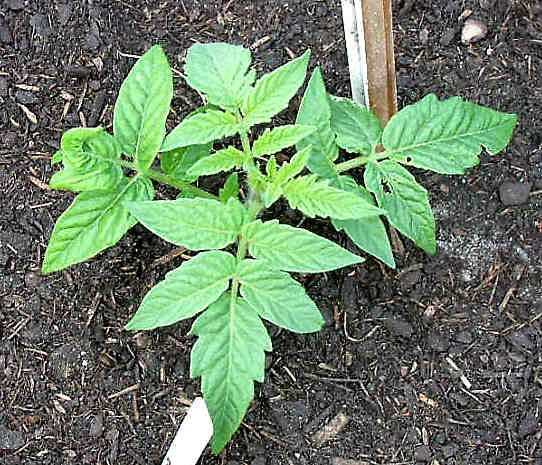Soil for Container Gardening
You’ve decided to create a container garden of one or more containers, or are using raised beds. You have the containers/beds…but what do you fill them with? As I mentioned in my tomatoes in containers post, it’s time to talk soil.
Ready Made or Mix Your Own?
To be honest, I would rather go with pre-bagged, if I could find exactly what I wanted, in the amounts I needed, at a good price. Given that I am still trying to fill something along the lines of 15 containers from 5 to 25 gallons each, that doesn’t quite work out — for me or the plants. For that kind of quantity, quality bagged potting soil can be expensive. However, if you are just filling a couple of 5 gallon containers, bagged potting soil might be just right for you.
The most important thing for container plants is that the roots have enough water and air. In order for water and air to penetrate the soil, it needs little spaces to slip into.
As a somewhat exaggerated example, it’s almost impossible for air and water to penetrate much into concrete. However, water and air pass easily through gravel. (Although I don’t recommend trying to grow in either, LOL.) 😉
So what you are looking for is soil that has enough space for air and water, but not so much that water pours right though it. Just keep thinking about Goldilocks and getting the mixture “just right”. 😉
Potting Mix, Garden Soil – What’s the Difference?
A potting mix is made especially for growing plants in containers. A bag of garden soil, though, is made to be mixed in with your current soil — not just placed in your containers without any intervention.
A good potting mix is fluffy, with plenty of perlite or vermiculite and sphagnum peat moss or coconut coir (in addition to compost, of course). Garden soil tends to be heavy, with little or no perlite, vermiculite or moss/coir. Putting the bagged garden soil into your containers without lightening it up some will doom your plants to a slow death. Or at the very least, a much smaller harvest, because the plant roots have a hard time breathing.
What About “Mel’s Mix”?
Mel Bartholomew, of Square Food Gardening (SFG) fame, recommends the following mix. Although I don’t use the SFG method with the grid, etc., I do like the basics of his soil mix. It is:
- 1/3 Compost
- 1/3 Vermiculite
- 1/3 Peat Moss or Coconut Coir
The catch is that the compost needs to be from several sources. In other words, look at the ingredients that go into the compost you plan to use. If you’re not making the compost yourself (and maybe even if you are), you don’t want everything to be from one source.
For example, instead of buying 3 bags of compost that are all based on cow manure, you would want a bag of the cow manure-based compost, one of humus-based and another of poultry litter-based.
That being said, if you can’t find compost made from varying ingredients, try to at least get some from different manufacturers.
BTW, I do recommend reading Mel’s book, the All New Square Foot Gardening, Third Edition.
Other Ingredients?
Well, there are other “goodies” you can use to feed your soil, but that is a whole separate post. I’ll come back and put a link to that post when I have it completed. I am doing some experimenting, and so far the results have been quite interesting.
Mixing it Up
I typically mix my contain gardening soil up in a wheelbarrow — those 20 gallon pots really take a lot to fill them up! But sometimes, I only need to make up enough for a small planter.
For a small batch, I get one of those 5-gallon buckets (like you can get at Home Depot or Lowes) and scoop in a few trowels worth of compost. Next I’ll put in a trowel of vermiculite, another of perlite and then a scoop or two of coconut coir. I’ll mix that around with my trowel until it’s nice and blended, then pour it into its pot.
If the pot doesn’t end up being quite full enough, I’ll just throw in a handful or two of each of the above, then mix it all up by hand.
Compost is Your Plant’s Friend
I’d be remiss if I didn’t talk a little more about compost. If you have your own pile, you have ready access to it, and it’s probably full of all sorts of goodies for your tomato plants. If you don’t have a compost pile, you’ll need to go with a bagged compost.
When you walk down the aisles of your garden center, you’re likely to find several different brands of bagged compost. Take a look at the bags and read the ingredients. In Florida where I live, it’s heavy on the composted cow manure — believe it or not, we’re one of the top states for producing cattle (and you just thought we were beaches). What’s harder to find are composts from forest humus or mushroom compost. Read the labels, and if you can, get at least two different kinds. Each type is a little different with the (good) soil bacteria and/or (good) fungi, and so provides a more balanced set of nutrients.
Don’t make the mistake of thinking that all you need in your container is compost, though — it’s a bit too heavy (been there, done that). You will need to mix it with one or more of the perlite, vermiculite, etc. before planting your tomatoes in it.
For the few times I’ve planted in straight compost, the plants didn’t do so great. Yes, they grew and produced tomatoes but they seemed didn’t grow or produce as well as the containers where I had a mix.
Whew — that was a long post. Hopefully this has been helpful for you!
Leave a Reply